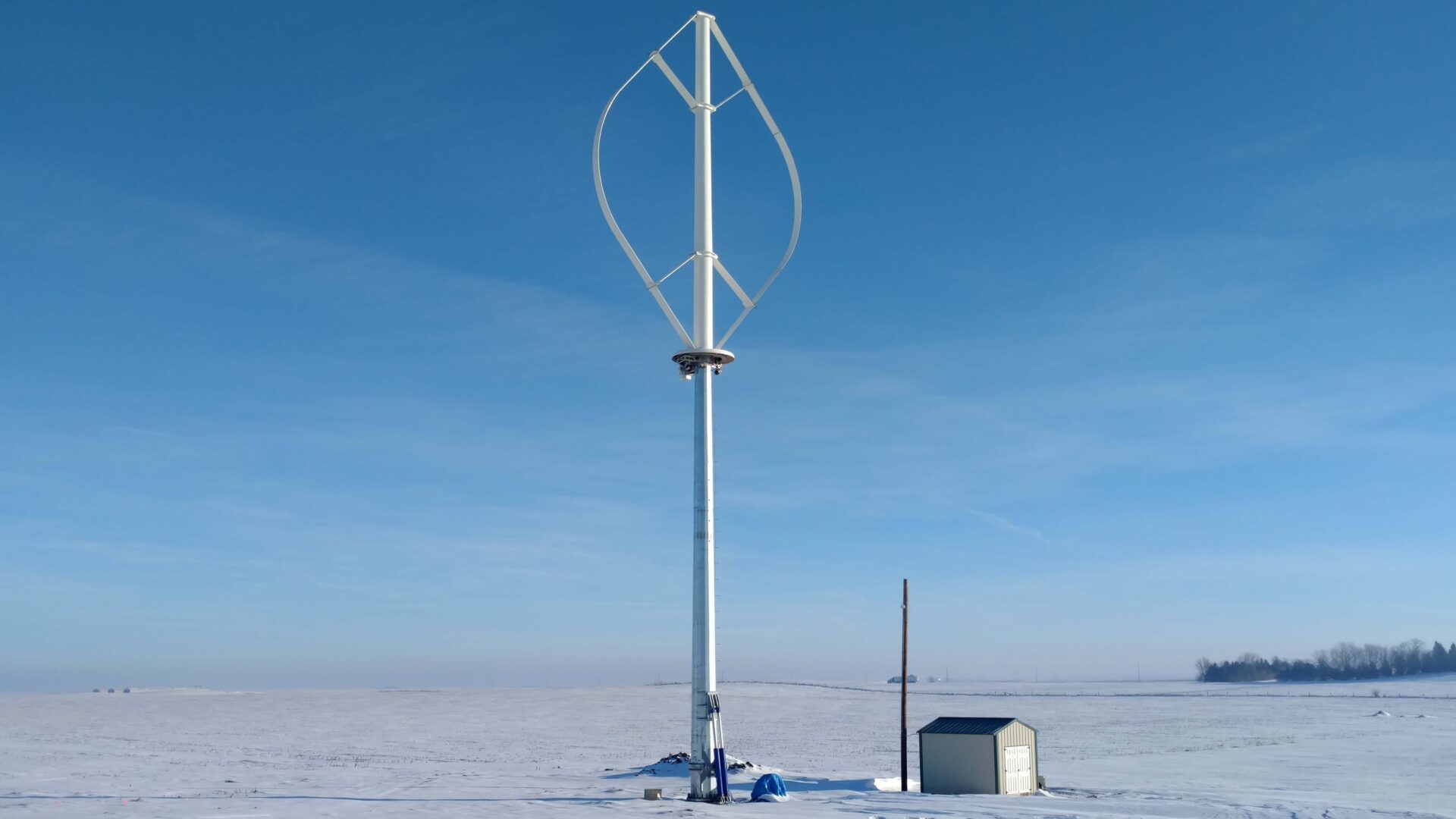
- Wind energy is one of the best alternatives to traditional sources of energy.
- Vertical Axis Wind Turbines (VAWTs), as they are often called, are easy to maintain, have low transportation and maintenance costs, and offer lots of convenience.
- For a vertical-axis wind turbine, the shaft it set transverse to the wind and its main components are found at the turbine’s base.
Wind energy is one of the best alternatives to traditional sources of energy. For one, it has a minimal carbon footprint. Furthermore, it is a self-reliant energy source and will enable you to get off the grid. Now there are two types of wind turbines, and we are going to be looking at one of them which is the vertical axis wind turbine.
Vertical Axis Wind Turbines (VAWTs), as they are often called, are easy to maintain, have low transportation and maintenance costs, and offer lots of convenience. That doesn’t even begin to cover it, though – read on to find out more about vertical-axis wind turbines.
A new study by Sandia National Laboratories (Sandia) provides a window into the technical and economic feasibility for deep-water offshore installations of a less-common wind turbine design: the vertical-axis wind turbine, or VAWT, as opposed to the horizontal-axis wind turbines commonly seen on and off shore.
The study identified an optimized system design to produce system levelized cost of energy (LCOE) estimates for five potential scenarios, such as what the LCOE might look like today, or what the cost might become as the technology matures. The LCOE projections for the optimized system in the study reflect an updated, in-depth analysis of new technology, system optimizations, and other factors related to VAWT designs.
Also Read
Vertical-Axis Wind Turbine Design
VAWTS feature a main rotor shaft which is positioned vertically. Thanks to this arrangement, the turbine does not have to face the wind for it to be effective. This comes as a plus on sites where the wind direction varies a lot – for instance when integrated into a building.
The main disadvantage of this arrangement is lower rotational speed, which results in higher torque, which consequently leads to a higher cost of the drive train.
Thanks to the vertical axis, the gearbox and generator can be positioned close to the ground. This enhances accessibility for maintenance.
What Makes Vertical-Axis Wind Turbines Better
For a vertical-axis wind turbine, the shaft it set transverse to the wind and its main components are found at the turbine’s base. This arrangement enables the gearbox and generator to be positioned near the ground.
As a result, maintenance/servicing and repair is much easier compared to horizontal-axis turbines where the key components are located high atop a tall tower. This reduces not just the costs but also the environmental impact.

Unlike horizontal-axis wind turbines (HAWT), vertical-axis wind turbines (VAWT) are omni-direction and therefore do not have to be pointed in the direction of incoming wind. As a result, they do not need the wind-sensing and orientation mechanisms used in HAWT structure.
Also Read
VAWTs are able to function better than HAWTs in the event of gusty, turbulent winds. Furthermore, HAWTS are unable to harvest turbulent winds efficiently, and that causes accelerated fatigue for them. The gearbox of a VAWT experiences far less fatigue than the gearbox of a HAWT.
VAWTs allow closer grouping in wind farms, and that leads to an increase in power generated per unit of land area. Furthermore, in a HAWT wind farm, you can install VAWTs below the existing HAWTs and thus increase/supplement power output.
References
[1] Vertical-Axis Wind Turbines Work Well Together
[2] Vertical-Axis Wind Turbines Could Reduce Offshore Wind Energy Costs





